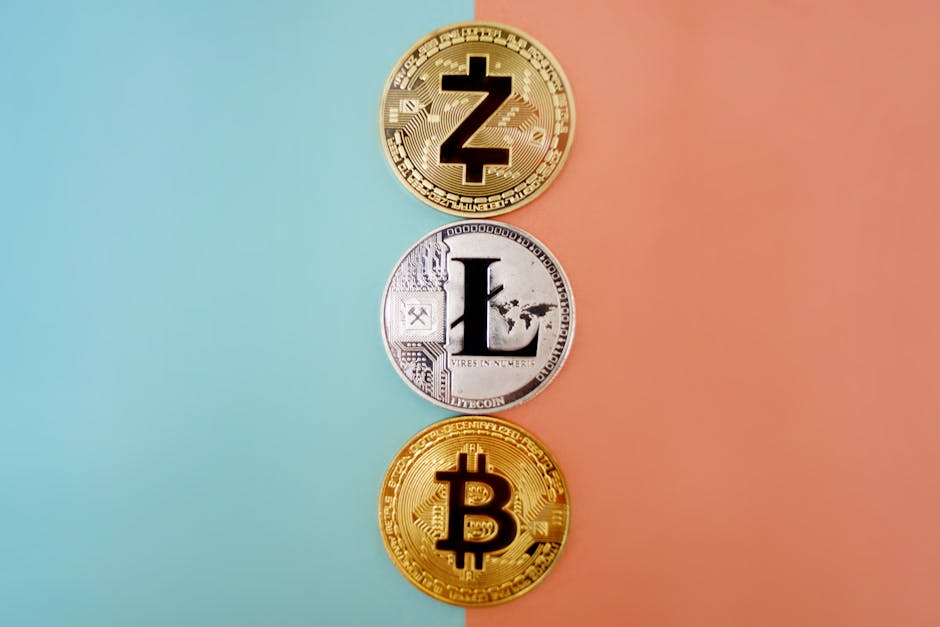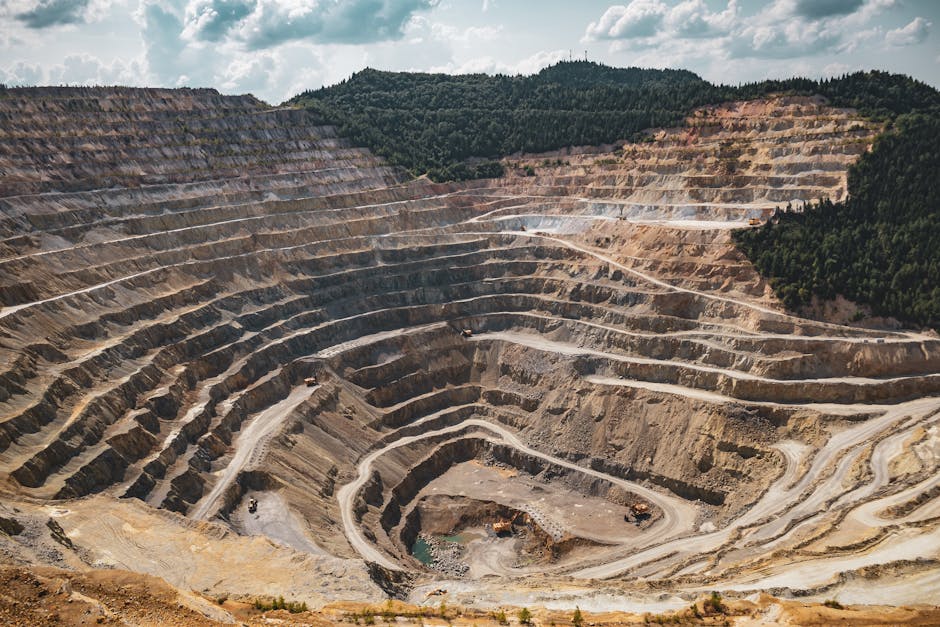Latest Bitcoin (BTC) News & Insights

Bitcoin (BTC), a digital currency that’s capturing the attention of the world, promises a future where financial transactions may look very different from today. As we explore the multifaceted aspects of Bitcoin—from its pricing volatility, legal challenges, adoption trends, to the environmental concerns of mining and technological advancements—each piece provides insight into the evolving role of this cryptocurrency. This article aims to shed light on the complex, dynamic nature of Bitcoin without getting lost in the weeds.
Bitcoin (BTC) Price Volatility
Why Bitcoin’s Price Keeps Changing
Bitcoin, the digital currency that’s taken the world by storm, has a reputation for being quite the rollercoaster when it comes to its price. One day, you’re watching it soar to breathtaking heights; the next, it’s tumbling down, leaving many scratching their heads, wondering, “What gives?” Let’s break down the reasons behind Bitcoin’s ever-changing price, minus the financial jargon.
Supply and Demand
At the heart of Bitcoin’s price fluctuation is the basic economic principle of supply and demand. Bitcoin is unique because there’s a finite supply – only 21 million Bitcoins will ever exist. This scarcity is similar to precious metals like gold, which have limited quantities and therefore, can be quite valuable.
When lots of people want to buy Bitcoin (BTC) (demand goes up), and there aren’t as many Bitcoins available for sale (supply is low), the price shoots up. Conversely, if fewer people want it or many are trying to sell, the price drops. Simple, right?
Market News
News can play a big role in Bitcoin’s pricing. Positive news, like a large company saying they’ll start accepting Bitcoin, can lead to more people wanting to buy, pushing the price up. On the flip side, negative news (think government regulations or high-profile hacks) can scare people into selling, leading to a price dip.
Market Sentiment
Think of this as the Bitcoin (BTC) mood. If people generally believe that Bitcoin’s value will go up, they’re more likely to buy and hold onto their Bitcoins, hoping to sell them for a profit later. This collective belief can drive prices up. But, if the mood swings and people start to fear that the price will drop, they may rush to sell, which can cause the price to plummet.
Speculation
A lot of Bitcoin’s price changes are driven by speculation. Essentially, people are making educated (or sometimes not-so-educated) guesses on where Bitcoin’s price is headed. If speculators believe the price will rise, they’re likely to buy, which can actually help push the price up. Conversely, if they think it’ll fall, they might sell off their Bitcoins, which can cause a price decrease.
Large Holder Influence
A small number of people and groups hold a significant chunk of all Bitcoins (often called “whales”). When these big players make a move, like selling a large portion of their holdings, it can have a significant impact on the market. Their actions can cause large price swings simply because of the sheer volume of Bitcoins they are dealing with.
To wrap it up, while the ride might be bumpy, understanding the factors that influence Bitcoin’s price can provide a clearer picture of why its value constantly changes. From supply and demand dynamics, market news, overall sentiment, speculation, to the influence of large holders – these elements all play a part in the cryptocurrency’s thrilling journey. Remember, investing in Bitcoin (BTC) or any cryptocurrency comes with its risks, and it’s always wise to proceed with caution.

Bitcoin Legal and Regulatory Updates
In the constantly evolving world of cryptocurrency, staying updated on legal and regulatory changes is crucial for anyone involved with Bitcoin (BTC). Lately, there have been several shifts in how governments and financial institutions are approaching Bitcoin, impacting its operation, trading, and overall perception in the market. Let’s break down some of these changes to understand what they mean for the future of Bitcoin.
First, there’s been a significant push towards more stringent AML (Anti-Money Laundering) and KYC (Know Your Customer) regulations. Countries worldwide, including major markets like the United States and the European Union, are tightening their rules to prevent the use of cryptocurrencies like Bitcoin for illegal activities. For investors and users, this means more verification processes and scrutiny when buying, selling, or holding Bitcoin. While this can be seen as a step towards legitimacy, it also introduces more hurdles and potentially delays transactions.
Another major development is the categorization of Bitcoin (BTC) as a taxable asset in several jurisdictions. The IRS in the United States, for example, now requires taxpayers to report transactions involving cryptocurrencies. This move not only adds a layer of complexity to dealing with Bitcoin but also highlights its recognition by authorities as a valuable asset. Investors need to be aware of these tax implications to avoid unexpected liabilities.
In some countries, we’re seeing entirely new regulations crafted to deal with cryptocurrencies. South Korea, a significant player in the Bitcoin market, has introduced unique laws governing the operation of crypto exchanges and the use of digital currencies. These laws aim to enhance user protection and prevent financial crimes, setting a precedent that other nations might follow. For the ecosystem, this could mean more stability but also more compliance costs for exchanges and service providers.
We cannot overlook the talks and speculations about central bank digital currencies (CBDCs), which have gained momentum. While not directly regulating Bitcoin, the introduction of government-backed digital currencies could alter the digital currency landscape. CBDCs are seen by some as competitors to decentralized cryptocurrencies, potentially affecting Bitcoin’s demand and utility in countries that launch their digital coins.
Lastly, the environmental impact of Bitcoin mining has caught the attention of regulators, leading to actions in certain regions. For instance, China, once home to the majority of Bitcoin mining operations, cited environmental concerns among its reasons for clamping down on cryptocurrency mining and transactions. This has led to a significant reallocation of mining activities to other countries, affecting the network’s geography and potentially its carbon footprint.
As we navigate through these changes, it’s clear that the legal and regulatory landscape for Bitcoin is becoming more complex. These developments can have diverse effects, from influencing Bitcoin’s price to shaping its future adoption and technological evolution. For anyone involved with Bitcoin, keeping a close eye on these changes is more important than ever.

Photo by theshubhamdhage on Unsplash
Bitcoin Adoption Trends
As Bitcoin’s journey continues, its global adoption is a topic worth exploring. This virtual currency has taken the world by storm, evolving from an obscure digital asset to a recognized currency and investment. Let’s delve into how Bitcoin is integrating into the global financial system and everyday transactions, along with the hurdles it faces on this path.
Bitcoin as a Payment Method
Across the globe, businesses big and small are starting to accept Bitcoin (BTC) as payment for goods and services. This trend is not just confined to online marketplaces. Brick-and-mortar stores, cafes, and even some professional service providers are beginning to see the value in offering their customers an alternative way to pay. This move towards accepting Bitcoin payments is partly driven by the desire to appeal to a tech-savvy demographic and by the lower transaction fees compared to traditional credit card payments.
Remittances and Financial Inclusion
One of the most impactful ways Bitcoin is being adopted globally is through remittances. For many people working abroad, sending money back home can be costly and cumbersome. Bitcoin offers a cheaper and faster alternative to traditional remittance services. This aspect of Bitcoin (BTC) is especially important in countries with less developed banking systems, providing a means for financial inclusion for the unbanked populations.
Adoption by Financial Institutions
In recent years, Bitcoin has started to catch the attention of Wall Street and global financial institutions. Some have begun offering cryptocurrency-related services to their clients, including Bitcoin futures trading and custody services. This marks a significant shift in perception, legitimizing Bitcoin’s presence in the traditional financial landscape. However, it’s essential to note that with this institutional interest comes increased scrutiny, perhaps leading to more regulated and structured market conditions.
Government and Regulatory Responses
The global adoption of BTC has prompted varied responses from governments and regulatory bodies. Some countries have embraced the technology, seeing it as an opportunity for innovation and economic growth, going so far as to launch their digital currencies inspired by Bitcoin’s underlying blockchain technology. Others have taken a more cautious or even hostile stance, implementing strict regulations or outright bans due to concerns over financial stability, fraud, and criminal use.
Educational Efforts and Awareness
For Bitcoin to achieve widespread adoption, the general public needs to understand what it is and how it works. Educative efforts by various organizations and enthusiasts play a crucial role in demystifying cryptocurrency and encouraging more people and businesses to adopt it. Workshops, online courses, and community meetups are proliferating, aiming to build a knowledgeable base of users who are confident in using Bitcoin in their daily lives.
Integration Challenges
Despite the growing interest and adoption, BTC faces several challenges. These include scalability issues that can lead to slow transaction times during peak periods, price volatility, and regulatory uncertainty in many jurisdictions. Moreover, there’s still a significant portion of the population hesitant to adopt digital currencies due to security concerns and a lack of understanding of how they work.
In conclusion, Bitcoin’s journey towards global adoption is ongoing, marked by both advancements and setbacks. Its integration into the financial system and broader economy is a complex process influenced by various factors, from technological developments to regulatory environments. As BTC continues to evolve, it remains to be seen how widely it will be embraced and what impact it will have on the future of money and payments.

Bitcoin Mining Environmental Impact
Understanding the Environmental Impact of Bitcoin Mining
Bitcoin mining, a process crucial for generating new bitcoins and validating transactions on the blockchain, surprisingly, packs a hefty environmental punch. Here’s why: mining requires enormous amounts of electricity to power the sophisticated computers involved. These computers solve complex mathematical puzzles, a process that, while essential for maintaining the integrity and security of the blockchain, consumes energy at staggering rates.
So, what’s the big deal about the energy consumption? The crux of the matter lies in the source of this electricity. In regions where fossil fuels like coal are the primary energy sources, Bitcoin mining’s carbon footprint balloons. To put it into perspective, if BTC were a country, its energy consumption would rank among the top 30 energy users worldwide. This energy usage translates into a significant amount of carbon emissions, contributing to climate change.
But it’s not all gloom. The Bitcoin community and wider cryptocurrency industry are alive to these environmental concerns. Innovations and shifts towards more sustainable practices are emerging. For instance, some mining operations are migrating to areas with abundant renewable energy sources. Countries rich in geothermal, hydroelectric, or wind power offer greener alternatives for mining operations, reducing the overall carbon footprint.
Moreover, there’s a growing interest in using excess natural gas, which would otherwise be flared into the atmosphere, for mining. By converting this gas into electricity on-site, miners can tap into an energy source that’s both efficient and less harmful to the environment.
The environmental debate surrounding BTC mining also leads to broader questions about the sustainability of cryptocurrencies. As digital currencies continue to grow in popularity, their impact on the environment cannot be overlooked. This has sparked discussions within the community about the possibility of moving towards more energy-efficient consensus mechanisms, like Proof of Stake, which Ethereum, another major cryptocurrency, is adopting.
To wrap up, while Bitcoin mining undeniably affects the environment, it’s essential to view this within the context of our overall energy consumption and environmental impact. It’s a call to action for the industry to prioritize green practices and for investors to consider the environmental aspects of their investment choices. The trajectory towards sustainability is promising, with the community taking steps to mitigate the environmental downsides. As we continue to innovate and adapt, the hope is for a cleaner, more sustainable future for cryptocurrency and blockchain technology.

Innovations in Bitcoin Technology
Bitcoin technology is continuously evolving, with developers around the world working on innovations to improve security, efficiency, and accessibility. As Bitcoin enters a new era of growth, let’s explore some of the latest advancements that are shaping the future of the most popular cryptocurrency.
Layer 2 Solutions – The Lightning Network
One of the most talked-about developments in Bitcoin technology is the Lightning Network. This layer 2 solution sits atop the Bitcoin blockchain, aiming to solve the scalability issues that have plagued Bitcoin by enabling faster and cheaper transactions. Think of it as a freeway built above a busy city street, where transactions can bypass the usual blockchain traffic, making everyday purchases with Bitcoin more practical. The Lightning Network allows users to open payment channels between each other, facilitating instant transactions that don’t need to be recorded on the blockchain immediately. This innovation is crucial for Bitcoin’s use as a daily payment method, reducing fees and waiting times.
Taproot Upgrade
Another significant advancement is the Taproot upgrade, which was activated in November 2021. This is a major milestone that enhances Bitcoin’s scripting capabilities and privacy. Taproot makes it possible to integrate smart contracts more efficiently into the Bitcoin network, allowing for more complex financial transactions to be executed with greater security and less data. Furthermore, it provides a privacy boost by making simple and complex transactions indistinguishable from one another on the blockchain. This means users can enjoy increased security and privacy, as well as lower transaction costs.
Improved Security Protocols
Security remains a top priority in the Bitcoin community, and recent innovations aim to fortify the network against potential threats. One such development is Schnorr signatures, which are part of the Taproot upgrade. These signatures significantly enhance the security of multisig transactions (transactions that require multiple signatures to be executed). Schnorr signatures not only improve scalability by making transactions lighter and faster but also bolster privacy by making multiple transactions appear as a single transaction.
Decentralized Finance (DeFi) on Bitcoin
While DeFi has predominantly been a feature of the Ethereum network, there is a growing movement to bring similar capabilities to Bitcoin. Projects like Stacks (STX) aim to enable DeFi, NFTs, and smart contracts on Bitcoin, leveraging its robust security features. This could open new avenues for Bitcoin, allowing it to be more than just a store of value or medium of exchange. By introducing lending, borrowing, and other DeFi services, Bitcoin could significantly expand its utility and appeal.
Mining Efficiency Improvements
The conversation around Bitcoin mining’s environmental impact has accelerated efforts to improve energy efficiency. Innovations in mining hardware and a move towards more sustainable energy sources are critical developments. Companies are designing more energy-efficient ASIC miners, reducing the carbon footprint of Bitcoin mining. Additionally, the industry is witnessing a geographical diversification of mining operations, with many setting up in regions that offer abundant renewable energy sources.
Educational Resources and Tools
Finally, the proliferation of educational resources and tools plays a significant role in the adoption and understanding of Bitcoin. With user-friendly wallets, improved security practices, and a wealth of online resources, newcomers can more easily navigate the Bitcoin ecosystem. Education is key to addressing misconceptions and promoting the responsible use of cryptocurrencies.
These innovations in Bitcoin technology are not just enhancing its current capabilities but are paving the way for new applications and broader adoption. As developers continue to push the boundaries, Bitcoin remains at the forefront of the cryptocurrency revolution, promising a future where digital currency is more secure, accessible, and efficient.
Stay informed, read the latest updates now!
As we’ve examined the varied dimensions of Bitcoin, from its fluctuations in value to the strides made in technology and adoption, it’s clear that the cryptocurrency is more than just a fleeting trend. It challenges traditional financial systems, redefines the concept of money, and raises critical discussions on sustainability and regulation. As Bitcoin continues to mature, its enduring impact on the global economy, environmental practices, and how we perceive the value and exchange of currency is beyond speculation. Staying informed and critically evaluating its progress is key to understanding its potential and pitfalls in a rapidly changing world.





One thought on “Latest Bitcoin (BTC) News & Insights”